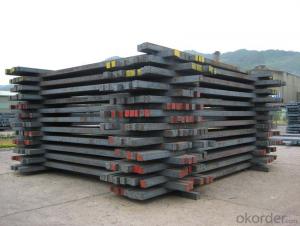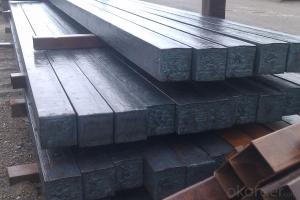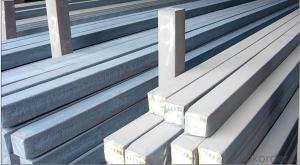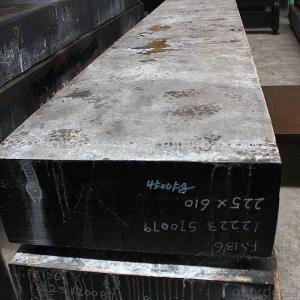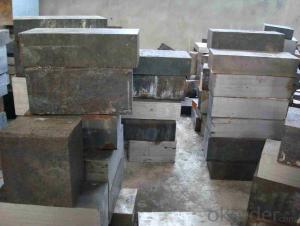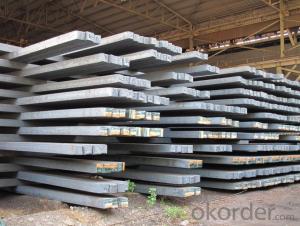Hot Rolled Steel Billet 3SP Standard 140mm
- Loading Port:
- Shanghai
- Payment Terms:
- TT OR LC
- Min Order Qty:
- 100 m.t.
- Supply Capability:
- 10000 m.t./month
OKorder Service Pledge
OKorder Financial Service
You Might Also Like
Structure of Hot Rolled Steel Billet 3SP Standard 140mm

Description of Hot Rolled Steel Billet 3SP Standard 140mm
Prepainted Rolled steel Coil is a kind of coated steel coil/sheet. With the cold rolled steel of different strength and thickness as substrate, it is produced through applying Al-Zn coat on both faces by hot dip process. In its coating, Al accounts for about 55%, Si 1.6%, while the remaining is Zn. Aluminum zinc coils enjoys both the physical protective feature and durability of Al and the electrochemical protective property of Zn. And its surface has bright silver color and regular embossed-like figure, which are highly decorative. RAL Scale Z35 Prepainted Rolled Steel Coil for Construction Roofing

Main Feature of Hot Rolled Steel Billet 3SP Standard 140mm
1.Corrosion resistance: It mainly depends on the zinc protection. When the zinc being worn,
2. Heat resistance: steel sheet has excellent heat resistance, can withstand high temperatures over 300 centigrade, and is similar with aluminized steel high temperature oxidation resistance. It often used in chimney pipes, ovens, fluorescent lighting device and the device cover.
3. Heat reflective: Galvanized steel plate heat-reflective high rate is twice as galvanized steel, often used to make insulation materials. RAL Scale Z35 Prepainted Rolled Steel Coil for Construction Roofing
Applications of Hot Rolled Steel Billet 3SP Standard 140mm
1. Construction and building: roofing; ventilating duct; handrail; partition panel;etc.
2. Electric appliance: refrigerator; washing machine; refrigerator; DVD;etc.
3.Transportation: oil tank; gas tank;road sign; etc.
4.Agriculture constructions :barn; etc.RAL Scale Z35 Prepainted Rolled Steel Coil for Construction Roofing
5.Others:vending machine; game machine; auto parts spare parts etc.
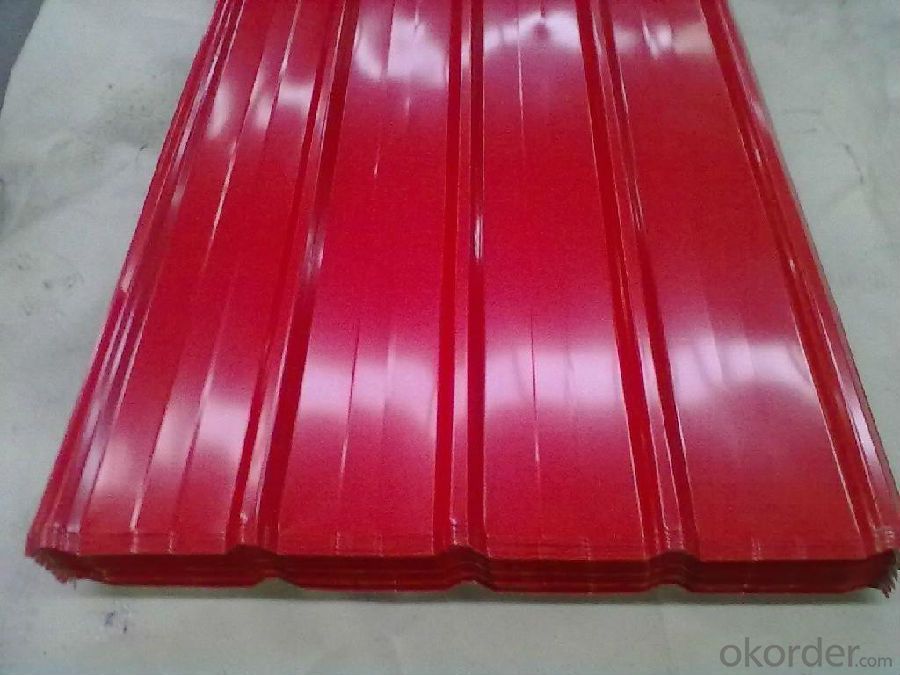
Specifications of Hot Rolled Steel Billet 3SP Standard 140mm
Product | Hot Rolled Steel Billet 3SP Standard 140mm |
Material Grade | SGCC / SGCH / DX51D+AZ, etc |
Thickness | 0.5-3.0mm |
Width | 700-1500mm |
Tolerance | Thickness: +/-0.02mm , Width:+/-2mm |
Zinc-coating | AZ30-150g/m2 |
Technique | Raw material: Hot rolled steel coil --> Cold rolled_>hot dipped galvalume |
Surface | Dried, Chromated, Unoiled,RAL Scale Z35 Prepainted Rolled Steel Coil for Construction Roofing |
Spangle | Regular spangle , small spangle, zero spangle |
ID | 508MM 610MM |
Coil weight | 25MT max |
Export package | Cardboard inner sleeves, Waterproof paper, galvanized steel covered and steel strip packed |
FAQ of Hot Rolled Steel Billet 3SP Standard 140mm
We have organized several common questions for our clients,may help you sincerely:
1. What is the minimum order quantity ?
Our MOQ is 100 mt for each size each specification. Usually we can offer discount if can buy large QTY once. RAL Scale Z35 Prepainted Rolled Steel Coil for Construction Roofing
2. How long can we receive the product after ordering?
Our general delivery time is 30 days after confirmation, but so some special orders, we have offer special delivery time
3. How to guarantee the quality of the products?
We have established the international advanced quality management system ,every link from raw material to final product we have strict quality test;We resolutely put an end to unqualified products flowing into the market. At the same time, we will provide necessary follow-up service assurance.
4. What is the payment?
We accept T/T, L/C
- Q:How are steel billets used in the production of aerospace structures?
- Steel billets are used in the production of aerospace structures as they are melted and cast into various shapes to create critical components such as beams, brackets, and fittings. These billets serve as the raw material that undergoes further processing, including machining, welding, and heat treatment, to meet the specific requirements and tolerances of aerospace applications. The high strength and durability of steel make it an ideal material for aerospace structures, ensuring the safety and reliability of aircraft.
- Q:What are the different types of steel billet casting methods?
- There are several different types of steel billet casting methods, including continuous casting, centrifugal casting, and ingot casting. Continuous casting involves the continuous pouring of molten steel into a water-cooled mold, resulting in a continuous solidified billet. Centrifugal casting utilizes centrifugal force to pour the molten steel into a rotating mold, creating a cylindrical billet. Ingot casting involves pouring molten steel into a stationary mold to create a solidified ingot shape, which is then further processed into billets.
- Q:How are steel billets used in the manufacturing of valves and pumps?
- Valves and pumps require steel billets, which are necessary raw materials in their manufacturing process. These billets are cast into specific shapes, typically squares or rectangles, and serve as the foundation for producing valves and pumps. To make valves, steel billets are first heated and then forged or rolled into the desired shape. The billets undergo various processes like cutting, drilling, and machining to create different valve components, including the body, bonnet, disc, stem, and seat. These components are then assembled to form the valve, which controls the flow of fluids or gases in a system. Similarly, in pump manufacturing, steel billets are heated and shaped to create essential parts such as impellers, casings, shafts, and housings. These parts are then assembled to construct a pump, responsible for transferring fluids or gases from one location to another. The use of steel billets in valve and pump manufacturing is crucial due to steel's inherent properties. Steel is highly valued for its strength, durability, and resistance to corrosion, making it ideal for applications in industries where valves and pumps face high pressures, temperatures, and corrosive environments. Moreover, steel's versatility allows manufacturers to customize valves and pumps in terms of size, shape, and specifications to meet the specific requirements of diverse industries and applications. This adaptability ensures that valves and pumps made from steel billets can perform reliably and efficiently in various environments and conditions. In conclusion, steel billets play a vital role in the manufacturing of valves and pumps. Through forging, shaping, and assembly processes, steel billets are transformed into essential components that constitute these crucial industrial devices. The use of steel guarantees the strength, durability, and corrosion resistance needed for valves and pumps to function effectively and endure demanding operational conditions.
- Q:What is billet?
- Mould blank and continuous casting billet: mould blank and continuous casting billet,
- Q:Are steel billets used in the shipbuilding industry?
- Steel billets are commonly utilized in the shipbuilding industry. They serve as semi-finished steel products, usually employed as raw materials for further processing. Within shipbuilding, these billets find application in the production of diverse structural components, including plates, beams, and bars, which constitute the ship's framework. The remarkable strength and durability of steel deem it an optimal material for ship construction, capable of enduring the challenging conditions of the marine environment. Moreover, steel billets possess the advantage of being easily molded and welded, facilitating the fabrication of intricate ship structures. Overall, the pivotal role played by steel billets in the shipbuilding sector revolves around supplying the essential raw materials necessary for constructing robust and dependable vessels.
- Q:How are steel billets used in the manufacturing of oil and gas industry components?
- Steel billets are an essential raw material used in the manufacturing of various components for the oil and gas industry. These billets, which are semi-finished steel products, play a crucial role in the production of pipes, valves, fittings, and other equipment required for oil and gas extraction, transportation, and processing. One of the primary applications of steel billets in the oil and gas industry is in the production of seamless and welded pipes. These pipes are used extensively for the transportation of oil, gas, and other fluids over long distances. Steel billets are first heated and then passed through a series of rollers to form seamless pipes. In the case of welded pipes, the billets are first formed into a tube shape and then welded along the length to create a strong and durable pipe. Steel billets are also used in the manufacturing of valves, which are crucial components in the oil and gas industry. Valves are used to control the flow of fluids within pipelines and equipment. Billets are machined and shaped to create valve bodies, which are then fitted with various internal components such as seats, discs, and stems. These valves are designed to withstand high pressures and temperatures, ensuring reliable and safe operation in the oil and gas industry. Furthermore, steel billets are utilized in the production of fittings, which are used to connect and join pipes together. Fittings such as elbows, tees, couplings, and flanges are manufactured from billets by machining and shaping them into the required dimensions and configurations. These fittings play a critical role in creating a reliable and leak-free pipeline system for the transportation of oil and gas. In addition to pipes, valves, and fittings, steel billets also find applications in the manufacturing of other equipment used in the oil and gas industry. These include drill bits, pumps, compressors, and various structural components for offshore platforms and refineries. The strength, durability, and corrosion resistance of steel make it an ideal material for these demanding applications, and steel billets serve as the starting point for their production. In conclusion, steel billets are a crucial raw material in the manufacturing of components for the oil and gas industry. Whether it is pipes, valves, fittings, or other equipment, billets are transformed through various processes to create the essential components required for the extraction, transportation, and processing of oil and gas.
- Q:Can steel billets be used in the manufacturing of machinery?
- Yes, steel billets can be used in the manufacturing of machinery. Steel billets are semi-finished products that can be further processed into various shapes and sizes for different applications. In machinery manufacturing, steel billets are often used as raw materials to produce components such as gears, shafts, and structural frames. The high strength and durability of steel make it an ideal choice for machinery that requires robust construction and reliable performance.
- Q:Can steel billets be forged?
- Yes, steel billets can be forged.
- Q:What are the factors that determine the lifespan of steel billets?
- Several factors influence the lifespan of steel billets. Firstly, the critical factor is the quality of the steel used during production. Steel containing high levels of impurities or inconsistent composition may have a shorter lifespan. The manufacturing process also has a significant impact. If the steel billets are not heated, cooled, or rolled properly, they may develop internal stresses or defects that can lead to premature failure. Furthermore, environmental factors affect the lifespan of steel billets. Exposure to corrosive substances, such as chemicals or moisture, can result in corrosion and degradation of the steel. Additionally, extreme temperatures can cause thermal expansion and contraction, leading to fatigue or cracking of the billets over time. The handling and storage of steel billets are equally important. Mishandling, dropping, or subjecting them to excessive impact can lead to deformation or microstructural changes that reduce their lifespan. Proper storage conditions, including protection from moisture, direct sunlight, and extreme temperature fluctuations, can help preserve the integrity of the billets. Regular maintenance and inspection also contribute to determining the lifespan of steel billets. Detecting and repairing defects or damages in a timely manner can prevent further deterioration and extend their lifespan. In conclusion, the lifespan of steel billets is determined by the quality of the steel, the manufacturing process, environmental conditions, handling and storage practices, as well as maintenance and inspections.
- Q:What are the different grades of steel used for producing billets?
- The different grades of steel used for producing billets vary depending on the specific requirements and applications. Some common grades include mild steel, low carbon steel, medium carbon steel, high carbon steel, alloy steel, and stainless steel. Each grade offers different mechanical properties, such as strength, durability, and corrosion resistance, to meet the desired characteristics for the final product.
1. Manufacturer Overview |
|
|---|---|
| Location | |
| Year Established | |
| Annual Output Value | |
| Main Markets | |
| Company Certifications | |
2. Manufacturer Certificates |
|
|---|---|
| a) Certification Name | |
| Range | |
| Reference | |
| Validity Period | |
3. Manufacturer Capability |
|
|---|---|
| a)Trade Capacity | |
| Nearest Port | |
| Export Percentage | |
| No.of Employees in Trade Department | |
| Language Spoken: | |
| b)Factory Information | |
| Factory Size: | |
| No. of Production Lines | |
| Contract Manufacturing | |
| Product Price Range | |
Send your message to us
Hot Rolled Steel Billet 3SP Standard 140mm
- Loading Port:
- Shanghai
- Payment Terms:
- TT OR LC
- Min Order Qty:
- 100 m.t.
- Supply Capability:
- 10000 m.t./month
OKorder Service Pledge
OKorder Financial Service
Similar products
New products
Hot products
Related keywords
